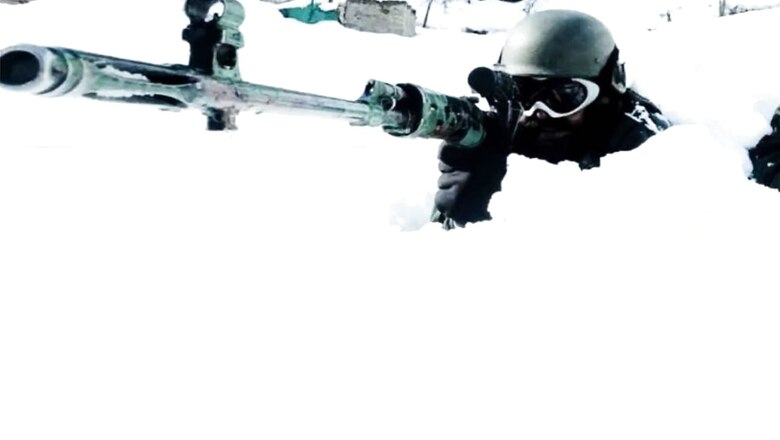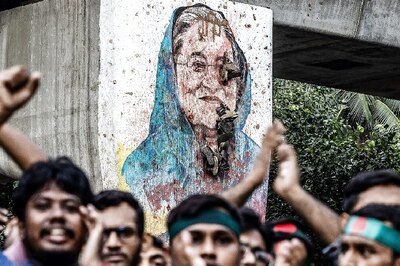
views
It is an unfortunate fact that we can secure peace only by preparing for war — John F. Kennedy
It is a mad, bad world, to each his own. Since time immemorial, competition created politics, and politics created confrontation and conflict. The world today is in persistent engagement where cooperation, competition, confrontation and conflict are increasingly geo-political, multi-domain (MD), 24×7 and multi-lateral (global). All nations, even the superpower United States of America, are compelled to carry out constant strategic balancing.
India is at war — hybrid and grey zone.
Defence forces personnel, especially officers, need to don the mantle of ‘security professionals’ and not just that of a kinetic warrior on the borders (LoC/LAC). Due to our training, experience and conditioning, the nation needs to co-opt the Armed Forces’ leadership when it comes to all matters of national security.
‘Integral and integrated’ jointness are the key buzz words when it comes to a nation and its armed forces’ responses to any security challenges. This approach is critical to achieving desired outcomes in the future. One major takeaway from the ongoing Ukraine war is that creation of integrated theatre commands (ITC) needs expeditious implementation.
NATURE, CHARACTER OF WAR
Conflict is a recognisable trinity of government, military and the people, each with differing reactions to war. There is a widespread intellectual consensus that the nature of war, in essence, does not change. It is still driven by fear, honour, interest, survival, uncertainty, bellicose culture, domestic pressure, perceived injustice, reaction to incursion, ambition or opportunism, and error, misunderstanding or prejudice. It still consists of violence, enmity, passion, chance and friction, rationalised political objectives, dynamic interaction and unpredictability.
The character of war is constantly in flux. However, multi-domain operations (MDO) and niche technology, which can be adopted by big or small nations and groups, is not only changing the character of war, but has overlapping influences on the nature of wars. Not surprisingly, the non-kinetic vertical, even in the ongoing Ukraine war, is gaining strategic importance (stronger focus on Information Influence Operations and PSYOPS), especially when nations are resorting to achieving their national objectives without crossing the adversary’s threshold for war. The changing nature and character of confrontation and conflict demands Joint Integrated MD capabilities, even to prosecute the non-kinetic operations successfully.
REGIONAL SECURITY COMPLEX THEORY AND ZONES
India must fight its own battles. International Relations theory states that ‘regional security zones’ are fairly independent of globalisation and global political trends due to strong emotional, geographical and historical links. Security interdependence is normally patterned into regionally based clusters or security complexes. Only global powers (USA and to some extent China) play a truly global game, and project their power onto far-flung regions. China dominates the regional security zones of Asia (more than USA). India is caught in the classic power play of global and regional security dynamics as it is not yet a great power. While it provides opportunities for India to emerge as a unique balancing power, it can only be accomplished by enhancing our comprehensive national power (CNP – external, internal and soft power), and addressing our challenges cohesively with ‘all of nation integrated’ approach.
The salient weaknesses, as observed by Kargil Review Committee and endorsed by GoM report in 2000-01 — current environment of hi-tech, multi-domain, short duration and limited wars (Ukraine war questions that premise), nuclear backdrop merits swift and dynamic responses. It requires calibrated management of the escalation ladder straddling across military and non-military verticals, for which the nation needs to prepare itself, within the constraints of resources and even more importantly, time.
My remarks: Jointness has become ‘existential’, with each service essentially operating in silos defined by its own threat perception and operational doctrine. Consequently, there is no other option, but ITCs.
GEO-STRATEGIC COMPULSIONS FOR INTEGRATED THEATRE COMMANDS
India needs to project power in its areas of strategic interests, which is pretty much most of Asia. A theatre command is inherently suited to projecting power. A theatre command concept that is centered on defending against Pakistan and China alone is not visionary. As a country, we aspire to be a great power and have a say in global governance. None of that will come without the necessary military power: however, no aping; create an Indian model. Theatre commands are more about effective warfighting than the issue of optimisation in terms of costs and manpower. Continental power salience is logical, but a regional power needs equal focus on aerospace and maritime domains. It is, therefore, more a matter of how, in what form, and the timeframe to create ITCs, geographical or threat-based, with centralisation of critical and key resources with de-centralisation based on mission or time. We could address the low hanging fruit of fine-tuning existing Andaman & Nicobar and Strategic Forces command, as also build on Cyber, Space and Special Forces commands/divisions. ITCs should be based on existing commands and structures to ensure less turbulence.
STRATEGIC OUTCOMES
The biggest payoff of creating ITCs is the national integration processes and structuring for integrated MD operations.
Here are some key takeaways:
• ‘Whole of Nation’ approach towards national security. Regional power capability building for regional influence and ‘Out of Country Contingencies’.
• National capacity and capability building for multi-domain operations both within and outside the Armed Forces – PDIME (political, diplomatic, Informational, military and economic), Cyber, Information Warfare, Perception Mgt, PSYOPS and Legal.
• Sharper edge and impact of military diplomacy.
• Better civil-military fusion.
• Unified approach to meet challenges of changing nature and character of war.
• Visible salience to India’s growing CNP, specially Armed Forces.
• Modernisation of our Forces – Optimisation, fiscal prudence and procurement prioritisation, focused and on time.
• Aatma Nirbharata gets a boost.
• India is one of the most disaster-prone nations, with growing stature for its timely and effective response globally. Our HADR (humanitarian and disaster relief) capabilities, too, will get a fillip.
• Niche and key Technologies – R&D and assimilation. Focus and urgency towards critical and scarce armaments and assets.
SUGGESTIONS FOR NATIONAL SECURITY STRUCTURES
• Set up Ministry of Internal Security similar to Department of Homeland Security; Group of Ministers (GoM) on National Security should lay out the broad framework of organisations and restructuring required for strengthening India’s internal security apparatus.
• CCS proclaims the ‘national security’ policy. Broad contours of ITCs be laid down with timelines for implementation. NSA, CDS and COSC and ministries concerned work out the national military policy.
• Set up ‘Hybrid and Disruptive Technology Management Agency’ to provide and oversee road map. Executive branches such as armed forces, central armed police forces (CAPF), intelligence agencies, key ministries and even corporates to build capabilities.
• National Intelligence Grid (NATGRID) and an effective National Counter Terrorism Centre (NCTC), combined with synergised Multi Agency Centre (MAC), and finally linking all these agencies on secure data links.
• Enhancing security consciousness of all citizens.
• Interface with National Disaster Management Agency authorities, science, technology and infrastructure development organisations in public and private sectors (to include hygiene, water and sanitation), health industry, customs and immigration, commerce, aviation, shipping, railways and tourism, schools, colleges and educational institutions, the media (specially social media) and many others (MD threat) on coordinating security threat responses.
• Information and intelligence would have to be shared seamlessly.
• Vital importance of human and psychological profiling: Create expertise in behavioral sciences. Human minds (especially leaders and military commanders and local populace) are principal cognitive elements of decision-making. Imagine reading the mind of our adversary leaders; especially when it comes to risk matrix under adverse circumstances (the West and India would love to know what is going on in the minds of Putin, Xi Jinping and Gen Bajwa).
• Nuclear: Our stated policy of ‘Never against non-NWS (nuclear weapon states)’; and ‘No first use’; however ‘massive retaliation’ if used against India or our troops anywhere, has stood the test of time. There is nothing in the present doctrine that prevents India from responding proportionately to a nuclear attack. Alarmingly, a fresh nuclear arms race is underway led by USA and exploited by China, which is relentlessly increasing its arsenal and modernising her nuclear architecture. Lack of agreements between NWS is disturbing. The practice of dual basing and deployment of conventional and nuclear assets; the concept of ‘use it or lose it’ and the Russian ‘escalate to de-escalate’, coupled with recent brinkmanship statements and manoeuvres, has endangered the globe as never before. India needs to review its nuclear architecture urgently.
• Biological Warfare (BW): Threat in forefront and greater scrutiny since the outbreak of the Covid pandemic. Origin stories may be propaganda, but the threat of leaks from labs is real and present danger. They are more devastating as they persist, propagate and spread through a population globally. The present BW convention lacks compliance monitoring and verification mechanisms, and is ineffective in controlling biological armament. A national and strategic body to monitor NBC threats, carry out holistic defence planning, preparation, procuring equipment, order raising suitable armed forces, paramilitary and NDRF units/sub-units and training is an absolute imperative in the immediate future. India is today well-poised geo-politically to lead the charge to ensure a more effective and punitive BW Treaty.
LESSONS FROM UKRAINE WAR
• The Theatre Command creation needs expediting — synergised command and integrated operations need to be institutionalised to fight a MDW. An effective theatre commander controlling the Ukraine campaign rather than orders emanating from Moscow may have altered the shape of the war.
• Re-evaluation of our doctrines, plans, joint training for MDW, force structures and manoeuvres has become a strategic necessity.
• Like Europe is slowly weaning away from Russian oil and gas supplies, we need to do the same for armaments and technology.
• An agile, tech-savvy, modern armed forces has become a must for India to provide decisive leverages among the comity of nations, especially larger powers.
• Nuclear weapons matter: Putin’s signalling has been a major factor in preventing the West from intervening militarily.
• Threat of economic sanctions, however severe, does not deter physical aggression.
• Our defence budget certainly needs an upgrade.
• The perception that an ‘all-out war’ or military invasion is a thing of the past, has been turned on its head, and that too in Europe!
• The ‘Tour of Duty’ concept needs fresh evaluation. The importance of committed junior leadership cannot be overstated.
• Extensive and effective employment of hi-tech disruptive tech such as starlink, drones, agile mobile innovative small teams by Ukrainains are pointers for us.
• Total synergy and transparency between the political, bureaucratic and military leadership on conduct of war is a strategic necessity.
• Large-scale tri-services exercises with troops (under intense and complex air defence, electronic warfare and information warfare conditions which the Chinese will wage) to try out concepts and operational plans is a must, and we must not leave it to theoretical intellectual wargaming. Ironically, while there will be almost total and real-time transparency on the battlefield, there will also be periods of blackout and disorientation, especially at operational and tactical levels.
CONCLUSION
To meet our myriad multi-dimensional security challenges, synergy and integration between and within all elements of national power is becoming almost existential, especially given our complex neighbourhood. Militarily, formation of ITCs has become an imperative to compete, confront and fight future wars. The Ukraine conflict provides us many lessons which should be acted upon expeditiously. As we continue to build ITCs, it will provide us out of proportion outcomes/payoffs and strengthen our Comprehensive National Power.
Lt Gen PR Kumar (Retd) served in the Indian Army for 39 years. He was the DG Army Aviation before superannuating from the appointment of Director General of Military Operations (DGMO) in 2015-end. He writes on international and regional geo-political, security and strategic issues. The views expressed in this article are those of the author and do not represent the stand of this publication
Read all the Latest Opinions here




















Comments
0 comment